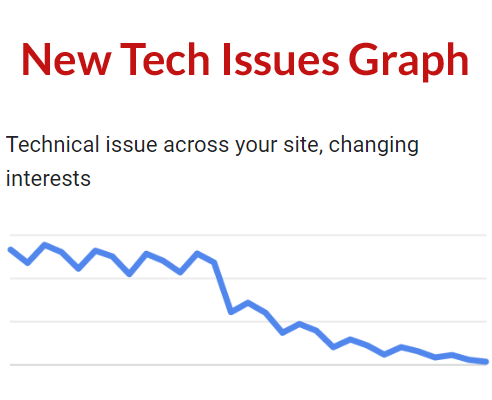SEO
Four tips for SEM teams to adjust to a privacy-focused future

30-second summary:
- Within the digital marketing space, the conversation around privacy and cookie changes has focused heavily on programmatic and paid social
- But how will third-party cookie deprecation and new privacy regulations impact paid search?
- Here is what search marketers can expect and how to prepare
In the digital marketing world, targeting, measurement, and optimization have foundationally relied on the ability to accurately track user behaviors and performance across the web. However, as we all know, platforms like Google and Apple have introduced privacy-focused initiatives over the past few years that complicate targeting and measurement for advertisers.
When discussing the impacts of these changes, much of the conversation has focused on programmatic and paid social, which are undoubtedly the digital channels feeling the greatest impact. What has not been discussed in great detail is the impact on search marketing. How should advertisers adapt their paid search strategies to adjust to these new realities?
Before digging into action items, let’s recap the newest updates and how they’ll impact paid search campaigns.
Chrome’s privacy updates will have a greater impact than iOS
There are two key privacy changes top-of-mind for search marketers in 2021. App Tracking Transparency (ATT), introduced through Apple’s iOS 14.5 update, requires a user to opt-in before a company can track their data across other apps or websites. Fortunately, the impact of this update on search programs for most advertisers is limited. Advertisers may see fluctuations in universal app campaign (UAC) volume, and search properties with a larger app-based audience (for example, YouTube) will experience some degradation in measurement and targeting. By and large, though, the ATT update is more of an issue for programmatic advertisers than search marketers.
Google Chrome’s third-party cookie deprecation, coming in 2023, will have a larger impact on paid search. From a targeting perspective, remarketing lists for search ads (RLSA) will become less effective without data on users’ behaviors across non-Google properties. As of Q3 2020, RLSA accounted for 20 percent of Google search ad clicks for Merkle advertisers – so this is a significant segment of traffic. There will also be new measurement challenges, especially for companies relying on proprietary reporting tech.
While iOS 14.5 is already a reality for advertisers, there is more than a year left to prepare for Google’s third-party cookie deprecation. There are several steps search marketers can take now to optimize performance within a more privacy-focused environment.
1. Lean into first-party data audience solutions to target
Effective audience segmentation and targeting will continue to be critical in search moving forward. Google offers several in-platform audience options, such as in-market and affinity audiences, that don’t rely on third-party data and can be leveraged by advertisers indefinitely.
However, there’s a greater opportunity for organizations to differentiate themselves by crafting a strong audience strategy using their own first-party data with Customer Match. Many advertisers already use Customer Match to some degree, but the data may not be refreshed regularly, or it may not be segmented in detail. The transition away from third-party cookies is the perfect impetus for fine-tuning a first-party data strategy.
First, advertisers should assess the quality of their first-party data. How comprehensive is the data that’s collected? Are there a lot of duplicate records, or is there a reliable unique record for each customer? All of the slicing and dicing in the world won’t be helpful if the data you’re working with is fundamentally flawed.
Next, marketers should assess opportunities to segment their customer lists in meaningful ways – a single “email subscribers list” isn’t going to cut it anymore. Smart segmentation is always important, but it will become even more critical because it will empower Google to build more tailored similar audiences.
After establishing segments, there must be a plan to refresh those audiences frequently. Determine an appropriate cadence for updating customer match lists and determine who’s responsible for doing it. Currently, this can be done through the Google Ads API or within the Google Ads interface.
Once a foundation is in place for your audience strategy, revisit your approach quarterly to ensure that segments continue to align with attributes important to your customers and your business. This also creates a natural check-in point to confirm that lists are being updated as expected and that they’re all receiving traffic. If needed, audience bid modifiers should be adjusted to reflect current performance.
On the topic of bidding…
2. Test or transition to Smart Bidding to take advantage of Google’s proprietary signals
While we, as advertisers, will have lesser user data available to us without third-party cookies, Google will continue to have a wealth of information about its users and their behavior on Google-owned properties. Google Ads’ Smart Bidding allows advertisers to take advantage of those audience signals to reach the right person at the right bid with machine learning. That’s not to say that segmentation isn’t important with Smart Bidding – it still is. One of the many signals the bidder looks at is all of the audiences a given user belongs to, including customer match audiences.
Advertisers can and should take advantage of custom audience segmentations through Google Analytics, Looker, or Google Cloud Platform (Big Query). And they should automate the pushing of defined customer audiences to Google marketing activation to maximize business data with Google’s Smart Bidding.
Whatever your advertising goals may be, there is likely a Google Ads Smart Bidding strategy to suit your business needs. For search marketers not yet using Smart Bidding, it’d be smart to start testing in early 2022 to iron out any kinks and have a full-blown Smart Bidding approach before 2023.
3. Get comfortable with new reporting methods
We’ve talked a lot about adapting to the changes to come with targeting, but privacy updates also create challenges for reporting. There will be a measurement gap that advertisers need to solve. Fortunately, Google Ads has solutions in place to help fill holes with enhanced and modeled conversions.
Enhanced conversions improve reporting accuracy by using an advertiser’s hashed first-party data to tie a conversion event to an ad interaction. Enhanced conversions are powerful in that they make a one-to-one connection between an impression or click and a purchase. Modeled conversions, on the other hand, find their power in scalability; Google has been using them to report on cross-device conversions for several years. When used in combination, advertisers get the benefit of precision where a one-to-one connection exists, while smartly estimating conversions in areas where it does not.
As privacy regulations increasingly muddy the reporting waters, the stakes are higher to work with Google to fill the gaps. If you’re relying primarily on proprietary technology for reporting, consider using Google’s measurement system to get a more complete picture of performance. Understanding the full impact of search is critical for being able to optimize and allocate budgets effectively. Note that Google’s global site tag or tag manager is required to appropriately track conversions.
4. Monitor universal app campaigns for performance changes
Advertisers using UAC to drive app downloads via paid search should closely monitor performance for those campaigns. So far, Merkle has observed a slow downward trend in tracked installs as a result of Apple’s ATT update. To avoid the effects of ATT, some advertisers are increasing their investment in Android or shifting spend there entirely. UAC can continue to be an effective channel for marketers, but reduced visibility on iOS may require bid or budget shifts in order to hit performance goals.
Conclusion
Privacy updates are changing the way marketers approach targeting and measurement. Don’t panic – but do put a plan in place. With the right adjustments, search advertisers can effectively pivot along with the industry. More than ever, advertisers must value first-party audiences driven by search to further customer engagement, experiences, and marketing ROI. Using that first-party data, in conjunction with machine-learning-based bid strategies and modeled and enhanced reporting, will create a foundation to help future proof search campaigns for privacy updates in the years to come.
Matt Mierzejewski is SVP of Performance Marketing Lab and Search at Merkle Inc.
Subscribe to the Search Engine Watch newsletter for insights on SEO, the search landscape, search marketing, digital marketing, leadership, podcasts, and more.
Join the conversation with us on LinkedIn and Twitter.
SEO
Big Update To Google’s Ranking Drop Documentation

Google updated their guidance with five changes on how to debug ranking drops. The new version contains over 400 more words that address small and large ranking drops. There’s room to quibble about some of the changes but overall the revised version is a step up from what it replaced.
Change# 1: Downplays Fixing Traffic Drops
The opening sentence was changed so that it offers less hope for bouncing back from an algorithmic traffic drop. Google also joined two sentences into one sentence in the revised version of the documentation.
The documentation previously said that most traffic drops can be reversed and that identifying the reasons for a drop aren’t straightforward. The part about most of them can be reversed was completely removed.
Here is the original two sentences:
“A drop in organic Search traffic can happen for several reasons, and most of them can be reversed. It may not be straightforward to understand what exactly happened to your site”
Now there’s no hope offered for “most of them can be reversed” and more emphasis on understanding what happened is not straightforward.
This is the new guidance
“A drop in organic Search traffic can happen for several reasons, and it may not be straightforward to understand what exactly happened to your site.”
Change #2 Security Or Spam Issues
Google updated the traffic graph illustrations so that they precisely align with the causes for each kind of traffic decline.
The previous version of the graph was labeled:
“Site-level technical issue (Manual Action, strong algorithmic changes)”
The problem with the previous label is that manual actions and strong algorithmic changes are not technical issues and the new version fixes that issue.
The updated version now reads:
“Large drop from an algorithmic update, site-wide security or spam issue”
Change #3 Technical Issues
There’s one more change to a graph label, also to make it more accurate.
This is how the previous graph was labeled:
“Page-level technical issue (algorithmic changes, market disruption)”
The updated graph is now labeled:
“Technical issue across your site, changing interests”
Now the graph and label are more specific as a sitewide change and “changing interests” is more general and covers a wider range of changes than market disruption. Changing interests includes market disruption (where a new product makes a previous one obsolete or less desirable) but it also includes products that go out of style or loses their trendiness.

Change #4 Google Adds New Guidance For Algorithmic Changes
The biggest change by far is their brand new section for algorithmic changes which replaces two smaller sections, one about policy violations and manual actions and a second one about algorithm changes.
The old version of this one section had 108 words. The updated version contains 443 words.
A section that’s particularly helpful is where the guidance splits algorithmic update damage into two categories.
Two New Categories:
- Small drop in position? For example, dropping from position 2 to 4.
- Large drop in position? For example, dropping from position 4 to 29.
The two new categories are perfect and align with what I’ve seen in the search results for sites that have lost rankings. The reasons for dropping up and down within the top ten are different from the reasons why a site drops completely out of the top ten.
I don’t agree with the guidance for large drops. They recommend reviewing your site for large drops, which is good advice for some sites that have lost rankings. But in other cases there’s nothing wrong with the site and this is where less experienced SEOs tend to be unable to fix the problems because there’s nothing wrong with the site. Recommendations for improving EEAT, adding author bios or filing link disavows do not solve what’s going on because there’s nothing wrong with the site. The problem is something else in some of the cases.
Here is the new guidance for debugging search position drops:
“Algorithmic update
Google is always improving how it assesses content and updating its search ranking and serving algorithms accordingly; core updates and other smaller updates may change how some pages perform in Google Search results. We post about notable improvements to our systems on our list of ranking updates page; check it to see if there’s anything that’s applicable to your site.If you suspect a drop in traffic is due to an algorithmic update, it’s important to understand that there might not be anything fundamentally wrong with your content. To determine whether you need to make a change, review your top pages in Search Console and assess how they were ranking:
Small drop in position? For example, dropping from position 2 to 4.
Large drop in position? For example, dropping from position 4 to 29.Keep in mind that positions aren’t static or fixed in place. Google’s search results are dynamic in nature because the open web itself is constantly changing with new and updated content. This constant change can cause both gains and drops in organic Search traffic.
Small drop in position
A small drop in position is when there’s a small shift in position in the top results (for example, dropping from position 2 to 4 for a search query). In Search Console, you might see a noticeable drop in traffic without a big change in impressions.Small fluctuations in position can happen at any time (including moving back up in position, without you needing to do anything). In fact, we recommend avoiding making radical changes if your page is already performing well.
Large drop in position
A large drop in position is when you see a notable drop out of the top results for a wide range of terms (for example, dropping from the top 10 results to position 29).In cases like this, self-assess your whole website overall (not just individual pages) to make sure it’s helpful, reliable and people-first. If you’ve made changes to your site, it may take time to see an effect: some changes can take effect in a few days, while others could take several months. For example, it may take months before our systems determine that a site is now producing helpful content in the long term. In general, you’ll likely want to wait a few weeks to analyze your site in Search Console again to see if your efforts had a beneficial effect on ranking position.
Keep in mind that there’s no guarantee that changes you make to your website will result in noticeable impact in search results. If there’s more deserving content, it will continue to rank well with our systems.”
Change #5 Trivial Changes
The rest of the changes are relatively trivial but nonetheless makes the documentation more precise.
For example, one of the headings was changed from this:
You recently moved your site
To this new heading:
Site moves and migrations
Google’s Updated Ranking Drops Documentation
Google’s updated documentation is a well thought out but I think that the recommendations for large algorithmic drops are helpful for some cases and not helpful for other cases. I have 25 years of SEO experience and have experienced every single Google algorithm update. There are certain updates where the problem is not solved by trying to fix things and Google’s guidance used to be that sometimes there’s nothing to fix. The documentation is better but in my opinion it can be improved even further.
Read the new documentation here:
Debugging drops in Google Search traffic
Review the previous documentation:
Internet Archive Wayback Machine: Debugging drops in Google Search traffic
Featured Image by Shutterstock/Tomacco
SEO
Google March 2024 Core Update Officially Completed A Week Ago

Google has officially completed its March 2024 Core Update, ending over a month of ranking volatility across the web.
However, Google didn’t confirm the rollout’s conclusion on its data anomaly page until April 26—a whole week after the update was completed on April 19.
Many in the SEO community had been speculating for days about whether the turbulent update had wrapped up.
The delayed transparency exemplifies Google’s communication issues with publishers and the need for clarity during core updates
Google March 2024 Core Update Timeline & Status
First announced on March 5, the core algorithm update is complete as of April 19. It took 45 days to complete.
Unlike more routine core refreshes, Google warned this one was more complex.
Google’s documentation reads:
“As this is a complex update, the rollout may take up to a month. It’s likely there will be more fluctuations in rankings than with a regular core update, as different systems get fully updated and reinforce each other.”
The aftershocks were tangible, with some websites reporting losses of over 60% of their organic search traffic, according to data from industry observers.
The ripple effects also led to the deindexing of hundreds of sites that were allegedly violating Google’s guidelines.
Addressing Manipulation Attempts
In its official guidance, Google highlighted the criteria it looks for when targeting link spam and manipulation attempts:
- Creating “low-value content” purely to garner manipulative links and inflate rankings.
- Links intended to boost sites’ rankings artificially, including manipulative outgoing links.
- The “repurposing” of expired domains with radically different content to game search visibility.
The updated guidelines warn:
“Any links that are intended to manipulate rankings in Google Search results may be considered link spam. This includes any behavior that manipulates links to your site or outgoing links from your site.”
John Mueller, a Search Advocate at Google, responded to the turbulence by advising publishers not to make rash changes while the core update was ongoing.
However, he suggested sites could proactively fix issues like unnatural paid links.
“If you have noticed things that are worth improving on your site, I’d go ahead and get things done. The idea is not to make changes just for search engines, right? Your users will be happy if you can make things better even if search engines haven’t updated their view of your site yet.”
Emphasizing Quality Over Links
The core update made notable changes to how Google ranks websites.
Most significantly, Google reduced the importance of links in determining a website’s ranking.
In contrast to the description of links as “an important factor in determining relevancy,” Google’s updated spam policies stripped away the “important” designation, simply calling links “a factor.”
This change aligns with Google’s Gary Illyes’ statements that links aren’t among the top three most influential ranking signals.
Instead, Google is giving more weight to quality, credibility, and substantive content.
Consequently, long-running campaigns favoring low-quality link acquisition and keyword optimizations have been demoted.
With the update complete, SEOs and publishers are left to audit their strategies and websites to ensure alignment with Google’s new perspective on ranking.
Core Update Feedback
Google has opened a ranking feedback form related to this core update.
You can use this form until May 31 to provide feedback to Google’s Search team about any issues noticed after the core update.
While the feedback provided won’t be used to make changes for specific queries or websites, Google says it may help inform general improvements to its search ranking systems for future updates.
Google also updated its help documentation on “Debugging drops in Google Search traffic” to help people understand ranking changes after a core update.
Featured Image: Rohit-Tripathi/Shutterstock
FAQ
After the update, what steps should websites take to align with Google’s new ranking criteria?
After Google’s March 2024 Core Update, websites should:
- Improve the quality, trustworthiness, and depth of their website content.
- Stop heavily focusing on getting as many links as possible and prioritize relevant, high-quality links instead.
- Fix any shady or spam-like SEO tactics on their sites.
- Carefully review their SEO strategies to ensure they follow Google’s new guidelines.
SEO
Google Declares It The “Gemini Era” As Revenue Grows 15%

Alphabet Inc., Google’s parent company, announced its first quarter 2024 financial results today.
While Google reported double-digit growth in key revenue areas, the focus was on its AI developments, dubbed the “Gemini era” by CEO Sundar Pichai.
The Numbers: 15% Revenue Growth, Operating Margins Expand
Alphabet reported Q1 revenues of $80.5 billion, a 15% increase year-over-year, exceeding Wall Street’s projections.
Net income was $23.7 billion, with diluted earnings per share of $1.89. Operating margins expanded to 32%, up from 25% in the prior year.
Ruth Porat, Alphabet’s President and CFO, stated:
“Our strong financial results reflect revenue strength across the company and ongoing efforts to durably reengineer our cost base.”
Google’s core advertising units, such as Search and YouTube, drove growth. Google advertising revenues hit $61.7 billion for the quarter.
The Cloud division also maintained momentum, with revenues of $9.6 billion, up 28% year-over-year.
Pichai highlighted that YouTube and Cloud are expected to exit 2024 at a combined $100 billion annual revenue run rate.
Generative AI Integration in Search
Google experimented with AI-powered features in Search Labs before recently introducing AI overviews into the main search results page.
Regarding the gradual rollout, Pichai states:
“We are being measured in how we do this, focusing on areas where gen AI can improve the Search experience, while also prioritizing traffic to websites and merchants.”
Pichai reports that Google’s generative AI features have answered over a billion queries already:
“We’ve already served billions of queries with our generative AI features. It’s enabling people to access new information, to ask questions in new ways, and to ask more complex questions.”
Google reports increased Search usage and user satisfaction among those interacting with the new AI overview results.
The company also highlighted its “Circle to Search” feature on Android, which allows users to circle objects on their screen or in videos to get instant AI-powered answers via Google Lens.
Reorganizing For The “Gemini Era”
As part of the AI roadmap, Alphabet is consolidating all teams building AI models under the Google DeepMind umbrella.
Pichai revealed that, through hardware and software improvements, the company has reduced machine costs associated with its generative AI search results by 80% over the past year.
He states:
“Our data centers are some of the most high-performing, secure, reliable and efficient in the world. We’ve developed new AI models and algorithms that are more than one hundred times more efficient than they were 18 months ago.
How Will Google Make Money With AI?
Alphabet sees opportunities to monetize AI through its advertising products, Cloud offerings, and subscription services.
Google is integrating Gemini into ad products like Performance Max. The company’s Cloud division is bringing “the best of Google AI” to enterprise customers worldwide.
Google One, the company’s subscription service, surpassed 100 million paid subscribers in Q1 and introduced a new premium plan featuring advanced generative AI capabilities powered by Gemini models.
Future Outlook
Pichai outlined six key advantages positioning Alphabet to lead the “next wave of AI innovation”:
- Research leadership in AI breakthroughs like the multimodal Gemini model
- Robust AI infrastructure and custom TPU chips
- Integrating generative AI into Search to enhance the user experience
- A global product footprint reaching billions
- Streamlined teams and improved execution velocity
- Multiple revenue streams to monetize AI through advertising and cloud
With upcoming events like Google I/O and Google Marketing Live, the company is expected to share further updates on its AI initiatives and product roadmap.
Featured Image: Sergei Elagin/Shutterstock
-

 WORDPRESS7 days ago
WORDPRESS7 days ago13 Best HubSpot Alternatives for 2024 (Free + Paid)
-

 MARKETING6 days ago
MARKETING6 days agoAdvertising in local markets: A playbook for success
-

 SEARCHENGINES6 days ago
SEARCHENGINES6 days agoGoogle Core Update Flux, AdSense Ad Intent, California Link Tax & More
-

 SEARCHENGINES5 days ago
SEARCHENGINES5 days agoGoogle Needs Very Few Links To Rank Pages; Links Are Less Important
-

 MARKETING6 days ago
MARKETING6 days agoHow to Use AI For a More Effective Social Media Strategy, According to Ross Simmonds
-

 SEO5 days ago
SEO5 days agoHow to Become an SEO Lead (10 Tips That Advanced My Career)
-

 PPC4 days ago
PPC4 days ago10 Most Effective Franchise Marketing Strategies
-

 SEARCHENGINES3 days ago
SEARCHENGINES3 days agoGoogle Won’t Change The 301 Signals For Ranking & SEO














You must be logged in to post a comment Login